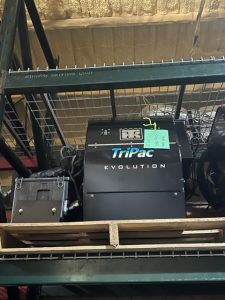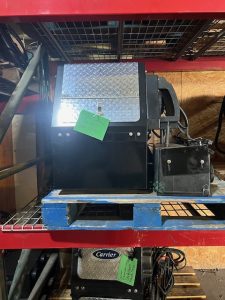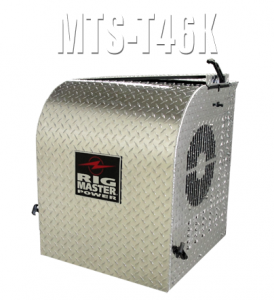What to Check When Buying a Used APU
 hicles like long-haul trucks and RVs without the need to keep the main engine running. This functionality is especially important for saving fuel, reducing engine wear, and complying with anti-idling laws. Given the importance of an APU in maintaining vehicle efficiency and comfort, purchasing a used unit demands careful consideration. The market for used APUs can be daunting if you aren’t familiar with the specific aspects that need attention. Factors such as the unit’s specifications, physical condition, compatibility with your vehicle, and performance history are all crucial elements to examine. These considerations help ensure that the APU you choose will not only meet your power needs but also prove to be a reliable investment over time. By being thorough in your evaluation, you can make a more informed decision and avoid potential pitfalls. With so many variables at play, understanding these key areas can help you navigate the complexities of purchasing a used APU, ensuring that you get the best value for your money.
hicles like long-haul trucks and RVs without the need to keep the main engine running. This functionality is especially important for saving fuel, reducing engine wear, and complying with anti-idling laws. Given the importance of an APU in maintaining vehicle efficiency and comfort, purchasing a used unit demands careful consideration. The market for used APUs can be daunting if you aren’t familiar with the specific aspects that need attention. Factors such as the unit’s specifications, physical condition, compatibility with your vehicle, and performance history are all crucial elements to examine. These considerations help ensure that the APU you choose will not only meet your power needs but also prove to be a reliable investment over time. By being thorough in your evaluation, you can make a more informed decision and avoid potential pitfalls. With so many variables at play, understanding these key areas can help you navigate the complexities of purchasing a used APU, ensuring that you get the best value for your money.
Understanding APU Specifications
When buying a used APU, understanding its specifications is key. Focus on two primary factors: power output and fuel efficiency. Power output determines if the APU can meet your energy needs, so start by calculating the power requirements for your vehicle’s auxiliary systems, such as air conditioning, heating, and electronic devices. Make sure the APU can handle this load with ease. Fuel efficiency is another critical specification. A more efficient APU will save you money on fuel and reduce your environmental footprint over time. Check the fuel consumption rates for different models within your budget and compare them to find the most efficient option. Beyond these two factors, consider additional specifications like noise levels and emissions. Quieter APUs can enhance comfort during use, particularly if you spend a lot of time in your vehicle. Emission levels are also important, as some regions have strict regulations on the emissions from auxiliary power units. Lastly, make sure to review the age and technology of the APU. Newer models may offer better performance, improved fuel efficiency, and lower emissions. This information can usually be found in the product manual or from the manufacturer. By focusing on these specifications, you’ll be better equipped to choose a used APU that meets your needs efficiently.
Assessing the Condition
When evaluating a used APU, start by examining its physical components closely. Look for any signs of wear, such as rust, cracks, or loose parts, which could indicate potential problems. Pay particular attention to critical components like the alternator, compressor, and hoses to ensure they are in good shape. In addition to the visual inspection, it’s important to review the maintenance records. These records provide valuable information about how the unit has been cared for by previous owners. Look for regular maintenance activities such as oil changes, filter replacements, and any significant repairs. Consistent maintenance is often a good indicator that the APU has been well-maintained, which could help you avoid unexpected breakdowns in the future. Another useful step is to run the APU, if possible, to listen for any unusual noises or vibrations that could point to underlying issues. Observing the unit in operation can give you a better idea of its current state and performance capabilities. By thoroughly assessing the physical condition and reviewing maintenance records, you can gauge the reliability and longevity of the used APU you are considering. This careful evaluation will help you make a more informed purchase and reduce the likelihood of encountering costly issues down the road.
Compatibility with Your Vehicle
Ensuring that a used APU integrates seamlessly with your vehicle involves several important steps. First, measure the available space on your vehicle and compare it to the dimensions of the APU. An APU that doesn’t fit properly can lead to installation issues and potentially impact performance. Next, focus on the integration with your vehicle’s electrical and fuel systems. The APU should connect easily to your vehicle’s existing infrastructure without requiring significant modifications. Consulting with a professional mechanic can help verify that the APU will work well with your vehicle’s setup and avoid any compatibility issues. Additionally, consider the mounting hardware and brackets that come with the used APU. Ensure they are compatible with your vehicle or easily adaptable. In some cases, you may need to purchase additional mounting equipment, which can add to the overall cost. Pay attention to the electrical requirements of the APU. Verify that your vehicle’s electrical system can support the APU’s power needs without overloading. This ensures that the APU operates efficiently and safely. Finally, check the fuel type and ensure it matches what your vehicle uses. An incompatible fuel type can result in poor performance and potential damage to the APU and your vehicle. Addressing these factors will help ensure a smooth installation process and optimal performance.
Evaluating Performance History
Evaluating the performance history of a used APU is essential for understanding its reliability and potential longevity. Start by gathering information on its previous usage. Units that have been in service for long periods or have high operating hours may be closer to the end of their life cycle and might require more frequent maintenance. Ask for details about the APU’s service history, including any repairs or part replacements, as this can provide insight into recurring issues or potential future problems. It’s also useful to research the specific model of the APU. Look for reviews and testimonials from other users to get a sense of common strengths and weaknesses. A model with a history of consistent performance and few reported issues is more likely to meet your needs and offer dependable service. Additionally, check if there have been any manufacturer recalls or known defects associated with the model. Addressing these concerns beforehand can help you avoid unexpected complications. By carefully evaluating the performance history, you can make a more informed decision and choose a used APU that is likely to be a reliable investment.



 can go a long way in prolonging the lifespan of your APU and ensuring your vehicle runs smoothly.
can go a long way in prolonging the lifespan of your APU and ensuring your vehicle runs smoothly. associated with increased soot and carbon buildup in the engine. This cleaner operation reduces the likelihood of engine problems that could lead to expensive repairs or even engine replacement. Additionally, by alleviating the strain on the primary engine, other related components such as the transmission and cooling systems also benefit, further cutting down maintenance costs. The extended lifespan of the engine and its components means fewer vehicle downtimes, ensuring that your fleet remains operational and productive. Reduced maintenance requirements not only save money but also allow for better allocation of resources, enhancing overall fleet management efficiency. By investing in APUs, fleet operators can significantly decrease their maintenance budget and redirect those funds toward other critical areas of the business, making it a financially sound decision.
associated with increased soot and carbon buildup in the engine. This cleaner operation reduces the likelihood of engine problems that could lead to expensive repairs or even engine replacement. Additionally, by alleviating the strain on the primary engine, other related components such as the transmission and cooling systems also benefit, further cutting down maintenance costs. The extended lifespan of the engine and its components means fewer vehicle downtimes, ensuring that your fleet remains operational and productive. Reduced maintenance requirements not only save money but also allow for better allocation of resources, enhancing overall fleet management efficiency. By investing in APUs, fleet operators can significantly decrease their maintenance budget and redirect those funds toward other critical areas of the business, making it a financially sound decision.


 quality of life for drivers during long-haul routes. Additionally, Rigmaster APUs are instrumental in reducing the need for engine idling, a common practice used to power ancillary functions but one that results in unnecessary fuel consumption and increased engine wear. By offering a standalone source of power for heating, cooling, and electrical needs, these units directly contribute to a reduction in fuel use. This not only translates to considerable cost savings but also decreases the environmental impact associated with prolonged engine operation. Reducing engine idling is also crucial for extending the lifespan of the truck’s main engine, ensuring that it remains operational for longer periods without the need for significant maintenance or repairs. These core functions of Rigmaster APUs—enhanced climate control, independent electrical power supply, and a significant reduction in the need for engine idling—demonstrate their integral role in improving the operational effectiveness of truck fleets while simultaneously elevating the living and working conditions of drivers on the road.
quality of life for drivers during long-haul routes. Additionally, Rigmaster APUs are instrumental in reducing the need for engine idling, a common practice used to power ancillary functions but one that results in unnecessary fuel consumption and increased engine wear. By offering a standalone source of power for heating, cooling, and electrical needs, these units directly contribute to a reduction in fuel use. This not only translates to considerable cost savings but also decreases the environmental impact associated with prolonged engine operation. Reducing engine idling is also crucial for extending the lifespan of the truck’s main engine, ensuring that it remains operational for longer periods without the need for significant maintenance or repairs. These core functions of Rigmaster APUs—enhanced climate control, independent electrical power supply, and a significant reduction in the need for engine idling—demonstrate their integral role in improving the operational effectiveness of truck fleets while simultaneously elevating the living and working conditions of drivers on the road. penalties associated with keeping the main engine running. This groundbreaking efficiency translates into direct cost savings. For fleet operators and independent drivers alike, the equation is simple: less fuel consumed equals more money saved. This economic advantage is further amplified when considering the broader implications of reduced engine wear. By minimizing the need for the main engine to idle, the Carrier APU not only cuts down on immediate fuel costs but also contributes to a longer engine lifespan, reducing the frequency and severity of maintenance requirements. This dual benefit of fuel efficiency and cost savings underscores the Carrier APU’s role as a vital tool for economic sustainability in the demanding world of trucking, providing a swift return on investment and supporting a more profitable operation.
penalties associated with keeping the main engine running. This groundbreaking efficiency translates into direct cost savings. For fleet operators and independent drivers alike, the equation is simple: less fuel consumed equals more money saved. This economic advantage is further amplified when considering the broader implications of reduced engine wear. By minimizing the need for the main engine to idle, the Carrier APU not only cuts down on immediate fuel costs but also contributes to a longer engine lifespan, reducing the frequency and severity of maintenance requirements. This dual benefit of fuel efficiency and cost savings underscores the Carrier APU’s role as a vital tool for economic sustainability in the demanding world of trucking, providing a swift return on investment and supporting a more profitable operation. If your business is in the fleet industry, it’s essential to be aware of new regulations and changes that could affect your operation. One such change is the shift in idling laws. With the emerging trend of strict idling laws, it’s time to explore options like an
If your business is in the fleet industry, it’s essential to be aware of new regulations and changes that could affect your operation. One such change is the shift in idling laws. With the emerging trend of strict idling laws, it’s time to explore options like an